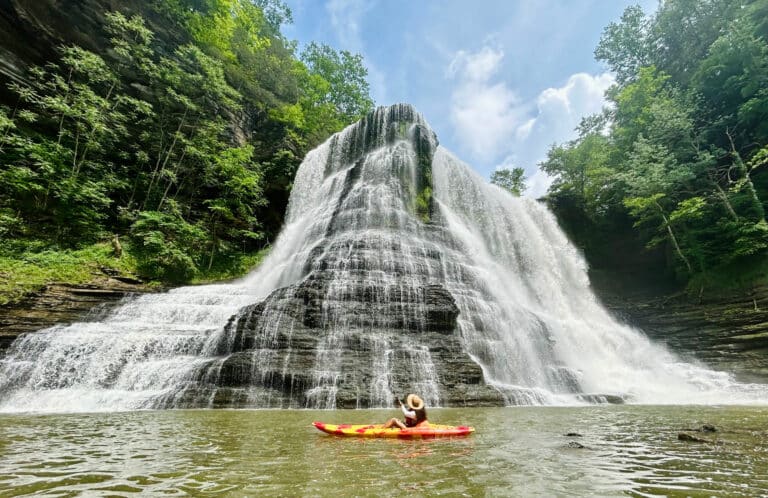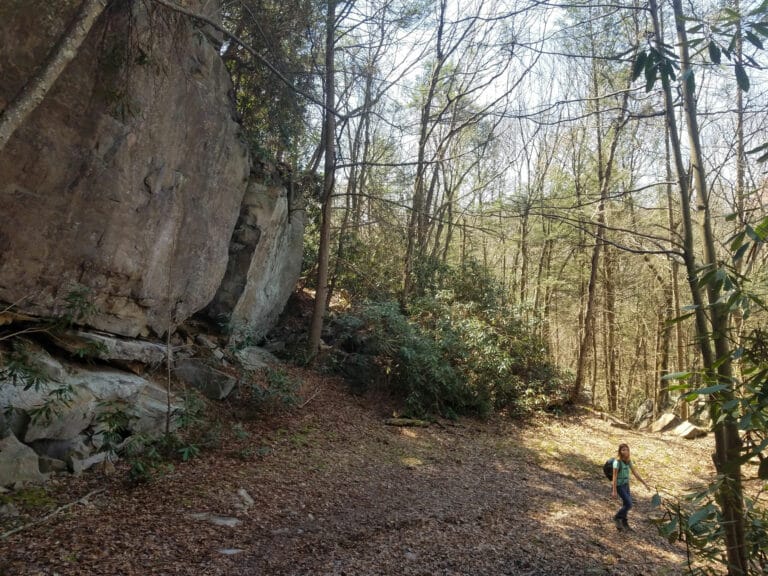“Dammit! I’m lost.”
Not a wonderful thought at any time, especially when you are leading a backcountry wilderness race—and you were the one who designed the course.
In 1998, I was five miles into the inaugural Mount Mitchell Challenge, a trail race which took runners to the highest point east of the Mississippi in the dead of winter.
Back then, trail running was just a fringe element of the larger running world, and the trail racing opportunities were very limited.
Some friends and I dreamed up the race, and the town of Black Mountain got behind it, but getting this idea to fly with the fire and rescue personnel was almost as challenging as the race itself. Mount Mitchell is a daunting environment in the winter, with heavy snow and wind speeds over 50 miles per hour.
When we stepped off the bus at the starting line and crunched through eight inches of crusty snow, I knew it was a whole new day for trail racing in Appalachia.
 There was more than a little trepidation on most faces when the reality of winter on Mount Mitchell stared us in the face. I had opted for no snowshoes: I figured that they would be too heavy in my pack for most of the race. One of the few pairs of snowshoes I did see was on a top triathlete from Bend, Oregon. Clearly, he knew things that we did not.
There was more than a little trepidation on most faces when the reality of winter on Mount Mitchell stared us in the face. I had opted for no snowshoes: I figured that they would be too heavy in my pack for most of the race. One of the few pairs of snowshoes I did see was on a top triathlete from Bend, Oregon. Clearly, he knew things that we did not.
The race began up the white-blazed Mount Mitchell Trail. Note to self: The white blazes that mark the trail on much of Mount Mitchell are hard to see when there is snow all over all the trees.
I was in the lead at the first checkpoint, head down, heart rate pegged at 190, headed up the steepest climb to the summit, sounding more like a diesel engine than a sports car.
I was just beginning to get past the lactic acid overload when I looked around and realized I wasn’t on anything that resembled a trail. The snow was deep enough to mask the obvious rutted track, and I had simply plowed straight through a switchback. I was post-holing to my knees in the snow and had no idea where I’d lost the trail. What the heck was I to do now?
First, no panicking…I got reeeeeaal quiet, which was no easy task, as the 6,300-foot altitude meant I was gasping for air. Then I listened for anything that sounded human. Eventually, I heard voices from below. I bee-lined to the voices, down through the knee-deep snow, and attacked the climb once again. This time, I was fortunate to have the new leader’s tracks to follow at the crucial turn, but I will admit to more than a little embarrassment at having to run past the same checkpoint crew twice. They looked confused as I sheepishly mumbled something about losing the trail.
The summit of any climb is a special place. It’s a transitional time when the physical toll seems to fade a bit and the panoramic wonder overwhelms you, a time when you know you are at the pinnacle of the day. When I finally stood atop Mount Mitchell, the highest point east of the Mississippi, the race dropped away for a few moments. Life came into sharp focus, and the view put everything in perspective. I felt small…and big…at the same time.
Then I headed back down the mountain. The final few steeply downhill miles were a haze of pain, eye-stinging sweat, and fear. Eventually, I was able to overhaul the lead and make my way to Black Mountain in first. But as the stories of the day came out, it was less of a race and more of a shared adventure. One guy gashed his head in a fall, wrapped his shirt around the wound, and still finished. He got stitched up in the kitchen of a local doc who had also run the race. There were also the fire and rescue professionals from Black Mountain who camped out for two nights in the snow so the runners would be safe in the backcountry.
When I look back at my life so far, I have a tough time picturing college professors or roommates that I saw every day. I can’t recall what all my apartments looked like. But there are a few times in life that are as clear as if I was living them right now. Standing in the cold knee-deep snow, seeing my breath erupt from me in clouds, listening very intently to the wind in the trees, smelling the overpowering Christmas tree scent of those spruce and fir, and trying to figure out my next move that day…I remember that. •







